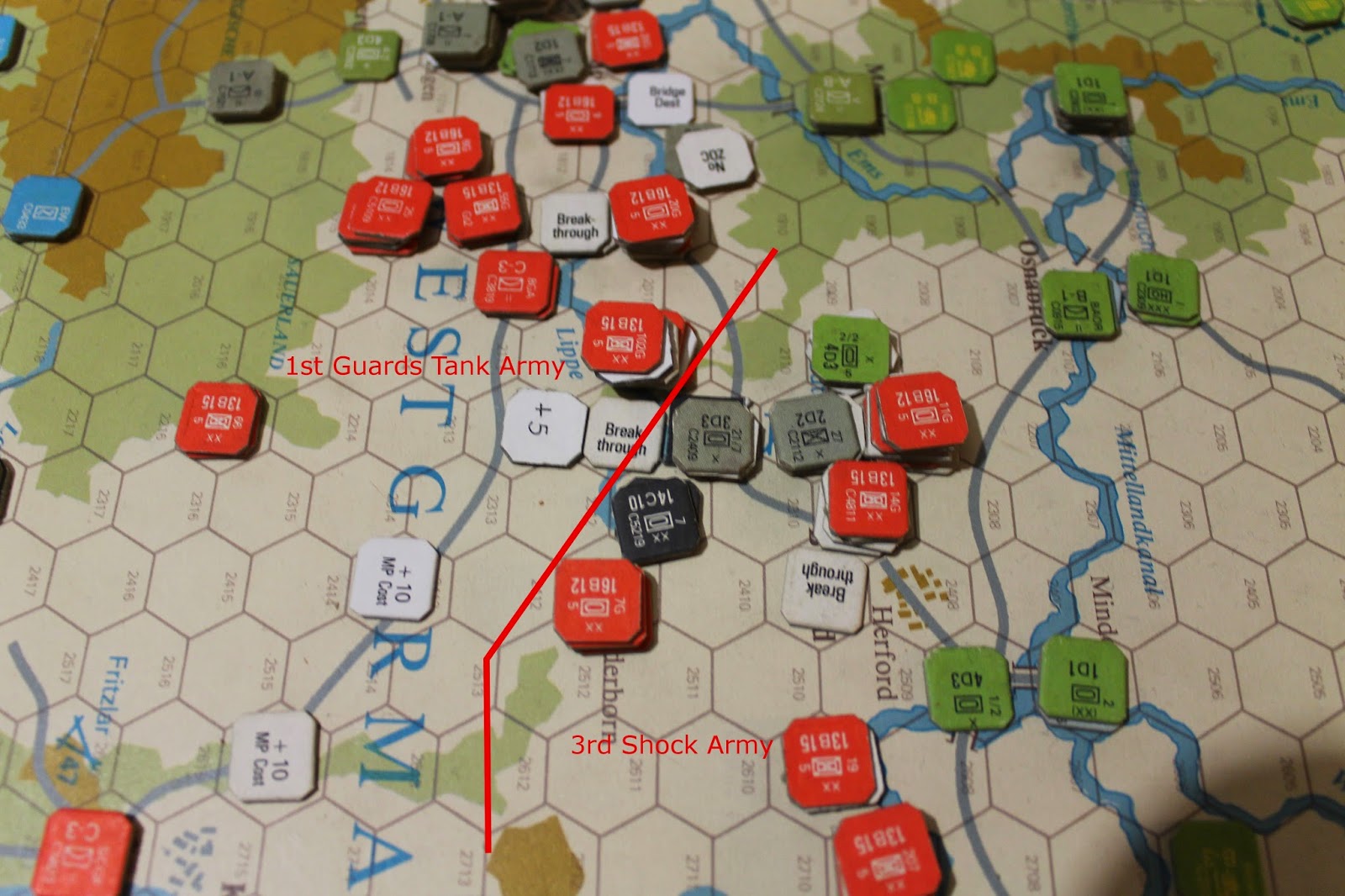Hamburg Stalemate
Not having enough forces to assault 11th German Division defences in Hamburg, the bulk of 2nd Guards Tank Army stopped in front of the city, while one Soviet Division moved South of Elbe to continue the encirclement manoeuvre. Unfortunately, fanatic resistance by a German reserve regiment prevented any further advance.
In the 20th Guards Army area, 94th Guards Division destroyed 42/4 Dutch brigade and 9/3 German Brigade.
 |
| 2nd and 20th Guards Armies positions at D+3, 18:00 Zulu Time |
Final Movements in North Army Group Area
In the final hours of D+3, the rearguards divisions of 3rd Shock and 1st Guards Tank Armies moved forward, getting ready to attack at the following dawn.
 |
| 3rd Shock Army positions at D+3, 18:00 Zulu Time |
 |
| 1st Guards Tank Army positions, D+3 18:00 Zulu Time |
At 18:00, May 6, 1980 (D+3), a cursory look at the strategic situation in Europe Central Front suggested a triumphant advance of Warsaw Pact's steamroller, with little or no chance for the West to stop it before the Rhine. NATO propaganda had a hard time trying to persuade the public opinion that despite the appearances the battle had just begun, particularly after years of insane declarations about the "forward defence" strategy in West Germany.
 |
| Overall situation at 18:00, D+3 Zulu Time NATO corps are not outlined due to the blurred defence lines |
Actually, Warsaw Pact forces had several problems, and not all of them came with a handy solution.
- The Air Force was in terrible shape and probably unable to contest NATO superiority for more than 2 days
- Poland defection and Czech revolts subtracted at least 15 Division from available forces, leaving a weakened North Germany Front and forcing the other Fronts to overextend their assigned area
- Most Armies only had two more days of supplies available, after which they would have to receive them using railroads and Front Supply Heads
- Lines of communication and supply were fragile and only lightly defended, with several key bridges and crossing constantly hammered by NATO helicopters and airplanes
However, the second strategic echelon of Soviet forces was expected in East Germany starting from D+7. If Pact's forces were able to keep momentum for another few days, the almost continuous flow of second-line Divisions would solve most of the problems.

Fabrizio, thanks for taking the time to publish your game progress. I'm a fan of "The Next War" and am looking forward to future posts. I've also added another link on my web site (http://www.grognard.com).
ReplyDeleteAh, the Grognard WebMaster ! I'm honored!
ReplyDeleteThe next update should come this week, after NATO finishes his land phase. He just received 16 regiments of German reservists and I'm very eager to know how his NorthAG defense line will be after moving them to the front line...
Greetings Fabrizio:
ReplyDeleteYour AAR project seems to progressing quite satisfactorily thus far; however, I am a little curious as to the progress (or lack thereof) of Warsaw Pact naval and naval/air operation in the Baltic. Are you playing with all of the air-land-sea rules, or are you concentrating mainly on the (admittedly) far more interesting and fast-moving ground game?
Best Regards, Joe
Hi Joe,
DeleteWe are playing using all the optional rules except the naval ones. I've always thought they are too cumbersome without adding real depth to the game.
We simplified them by just giving WP a chance of amphibious landing by dice roll starting from turn 3 of war
great stuff carry on!
Delete